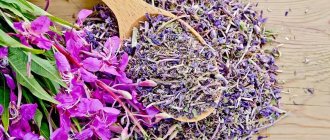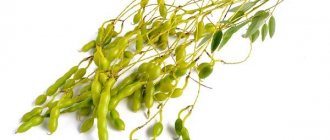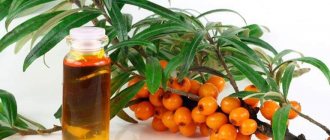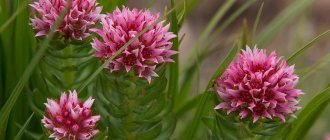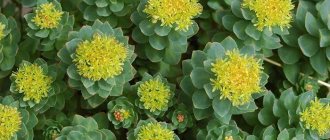Photo: What are the benefits of flax seeds, how to take them without harm to the body?
Flax is not just a plant from which fabric has been produced for a long time, but also a very useful medicine for the body. Flaxseed oil produced from it is a source of essential fatty acids for humans. Flax seeds themselves are used in a variety of dishes, as well as in the form of decoctions and tinctures, as a therapeutic agent. We will tell you in more detail how to take them beneficially and without harm, what are the beneficial properties and what flax seed treats.
There are 3 different types of flax:
- Len-mediocre. Used in a wide variety of areas. Fabrics are made from this flax, and it is also actively used as a raw material for oil production.
- Flax flax. This species has long stems, which is why it gets its name. This flax is used exclusively for making fabrics.
- Curly flax. This type of flax is not used as a woven raw material, but due to the many pods with seeds, it is the main type of this plant from which linseed oil is produced.
The diverse composition of this plant allows it to be used as a therapy for a wide variety of diseases of organs and body systems.
- What diseases can flax seeds cure?
- Beneficial properties of flax seeds Benefits for men
- Benefits for women
Release form
The seeds are round on one side and pointed on the other, flattened, unequal. Their surface is smooth and shiny; when viewed through a magnifying glass with 10x magnification, a light yellow seed ridge is clearly visible. The thickness of each of them is up to 3 mm, length - up to 6 mm.
The color of the seeds can vary from yellowish to deep brown. There is no smell. The aqueous extract has a mucous-oily taste.
The seeds are produced packaged in paper, polyethylene or polypropylene bags of 50, 75, 100 and 150 grams, one bag in a cardboard box.
Flax for diabetes mellitus type 1 and 2
Antioxidants are known to reduce inflammation, insulin resistance, and prevent the progression of diabetes. Additionally, research shows that foods rich in omega-3 fatty acids improve insulin sensitivity and reduce glycemia.
As for flaxseeds, they are by far the best source of lignans, an active substance with antioxidant effects, as well as linolenic acid (an essential fatty acid).
In general, the components of flax seeds have antioxidant, lipid-lowering and hypoglycemic effects, which are necessary in the treatment of diabetes. Research has shown that they may reduce the likelihood of developing type 1 diabetes and delay the development of type 2 diabetes.
It should be noted that according to the researchers, the high fiber content of the seeds also aids digestion and promotes the proper absorption of fats and sugars.
Therefore, if you have high sugar levels, include them regularly in your diet. Every day in the morning on an empty stomach, take one tablespoon of powdered seeds with a glass of warm water.
Pharmacodynamics and pharmacokinetics: beneficial properties of flax seeds
The medicinal properties of flax seeds are determined by the presence in their composition of the glycoside linamarin, fatty oil and mucus. Once in the digestive canal, these substances envelop it, thereby protecting the sensitive endings of the nerve fibers of the gastrointestinal mucosa from irritation and preventing the development of inflammatory processes (especially during gastric hypersecretion ).
Flaxseed oil is a source of PUFAs. From 55 to 70% of their total amount is linolenic (belongs to the ѡ-3 acids), another 10-20% is linoleic (belongs to the ѡ-6 acid class).
The ratio of ѡ-6 and ѡ-3 fatty acids in oil obtained from flax seeds is considered optimal for complete nutrition.
In addition, the product contains plant fiber, which helps cleanse the body, improve the microflora of the intestinal tract and normalize digestion. The beneficial properties of white flax seed allow them to be used effectively for obesity and functional constipation.
The advisability of using an intestinal cleanser is due to the fact that when it enters the large intestine, the seeds continue to swell, loosening the feces and facilitating their passage.
Due to the high concentration of gluten (mucus), flax envelops, relieves pain and inflammation. These properties make it possible to use the herbal medicine not only for the stomach and intestines, but also for a number of diseases of the upper respiratory tract.
Insoluble fiber from flax seeds reduces the absorption of toxins, which makes it possible to use the product to cleanse the body in case of various types of poisoning.
The lignans contained in the outer layer of the seeds promote normal growth and intrauterine development of the child, stimulate lactation, smooth out the unpleasant symptoms of menopause, prevent the development of tumors in the mammary glands, and reduce the manifestations of hormonal imbalance.
PUFAs, which are part of the grains, reduce the risk of atherosclerotic vascular damage . Their sprouts are indicated for thrombophlebitis and hypertension , as well as for varicose veins . In addition, the plant helps restore the functioning of the heart and blood vessels .
Chemical composition
- Polyunsaturated fatty acids Omega-3, Omega-6 and Omega-9;
- Lignans;
- Proteins;
- Carbohydrates;
- Fats;
- Cellulose;
- Gluten;
- Polysaccharides;
- Proteins;
- Vitamins A, B, C, D, E, F, K, PP, etc.;
- Alimentary fiber;
- Mucous substances;
- Natural sugars;
- Starch;
- Glycosides;
- Phytosterols;
- Styrene;
- Esters;
- Minerals: iodine, phosphorus, selenium, sodium, zinc, calcium, boron, magnesium, potassium manganese, etc.
Indications for use
The use of flax seeds is indicated to reduce irritation in ulcerative and inflammatory diseases of the gastrointestinal tract : including gastritis , stomach ulcers , esophagitis , enteritis , colitis , etc. In addition, the seeds are prescribed as a remedy for constipation .
Externally used to treat burns and inflammatory skin diseases .
In folk medicine, the remedy is used to remove parasites from the body, treat respiratory diseases, protect against the negative consequences of exposure to radioactive radiation, for diabetes mellitus , diseases of the urogenital tract and diseases that are associated with a lack of prostaglandins for allergies , sexual dysfunction in men and women, edema, some mental illnesses (including depression and schizophrenia ), alcohol and drug addiction .
A decoction of flax seeds is used to reduce weight and maintain slimness. The use of ground seed is indicated in the postoperative period to strengthen the immune system and prevent the development of inflammation.
Flaxseed lignans in the colon are biotransformed into active phytoestrogens, which maintain hormonal balance and prevent the development of hormone-dependent tumors .
This property allows the herbal medicine to be used for cancer prevention.
Creating compresses
You can make compresses from flax seeds. They relieve pain, soften boils and abscesses. Here is the prescription:
The ground flax seed is placed in a gauze bag, which is immersed in hot water for 10 minutes, after which the bag is applied to the sore spot.
You can also use mucus for stomach ulcers, gastritis and enteritis.
1 tbsp. l. pour uncrushed flaxseeds into 2 cups of hot water and leave for 1 hour. Shake periodically and then strain. Use before meals for diseases of the gastrointestinal tract.
For hemorrhoids, 1/5 cup can also be used as a therapeutic enema of flaxseed mucus. Naturally, it should be slightly warmed up. After the enema you need to lie down in bed for 1 hour.
Benefits and contraindications of flax seeds
Flax seed: benefits and harm
The product is a source of essential compounds and fatty acids, including those that the human body is not able to produce on its own.
The lignans they contain have a positive effect on hormonal status, help fight fungal, viral and bacterial infections , and reduce the risk of developing cancer .
Amino acids protect cell membranes, preventing the penetration of harmful agents into the intracellular space and ensuring access of nutrients to the cells.
Regular consumption of grains helps reduce cholesterol and helps prevent recurrent myocardial infarction .
Plant fibers, which are present in large quantities in grains, increase the volume of feces, and the fatty oil they contain softens them and facilitates bowel movements.
The oil may be useful in the treatment of certain kidney diseases , diabetes , hypertension , AIDS/HIV infection .
However, it should be remembered that taking more than 50 grams of raw seeds per day can lead to poisoning. The optimal daily dose for an adult is no more than 2 tablespoons of seeds (or oil from them). It is prohibited to take the product in long courses.
The seeds are usually drunk in a two-week course, then a break is taken for 2 weeks. According to this scheme, treatment can be continued for up to 4 months. Then you must take a break of at least a month.
Flax seed: benefits for women
The benefits of flax seeds for the female body are enormous. In addition to the fact that this product helps to gently cleanse the intestines, normalize the condition of the digestive tract and weight, it also inhibits oxidation processes, thus slowing down the aging of the body and allowing you to preserve the beauty of your skin, nails and hair.
The seeds contain a rare and very valuable element - selenium , which takes part in the formation of proteins, enhances immune defense, supports normal liver function, and promotes the removal of heavy metal ions from the body, including cadmium and arsenic . In addition, the microelement is a powerful carcinostatic agent.
It is very important that selenium in the seeds is present in a form that is easily digestible by the body.
The phytoestrogens contained in the seeds are similar to endogenous estrogens , due to which the product equalizes the ratio of progesterone and estrogen , and also has a positive effect on the menstrual cycle .
Features of use and contraindications
Absolute contraindications for Flax Seed:
- individual intolerance;
- worsened cholecystitis ;
- dyspeptic symptoms;
- intestinal obstruction.
You should not consume seeds and oil from them if you have pancreatitis and cholelithiasis , peptic ulcer , keratitis , hepatitis , cirrhosis of the liver .
Seed is contraindicated for any pathology of the intestines and esophagus, while this ban does not apply to oil.
There are a number of diseases for which the seeds and oil from them cannot be taken, but an infusion or decoction is recommended. Raw grains are indicated for diseases of the heart and blood vessels , which are characterized by high cholesterol . In those cases when triglycerides and not cholesterol , the patient is advised to use a decoction.
Decoction or jelly is also prescribed for a number of inflammatory and functional bowel diseases, in which it is prohibited to take oil and raw grains (for example, with irritable bowel syndrome or ulcerative colitis ).
Contraindications
The main contraindications to the use of products based on flax seeds are individual intolerance, pregnancy, lactation, uterine fibroids, polycystic disease and endometriosis in women, prostatitis in men.
It is not recommended to use flaxseed in large quantities during exacerbation of cholecystitis, colitis and pancreatitis.
The herbal product is used with caution for urolithiasis, because flax has a strong choleretic effect, which can lead to the movement of stones.
It should be borne in mind that when consuming a large amount of seeds without drinking plenty of fluids, heaviness in the liver area, bloating and increased flatulence are possible.
Instructions for use: how to take Flax Seeds?
How to use Flax Seeds?
The mucus of flaxseeds or seeds pre-soaked in water are used internally.
For ulcerative and inflammatory lesions of the digestive canal, mucus is taken 3 times a day, 30 minutes before meals, 50 ml per dose. Treatment is continued for 2 to 3 weeks.
Flax seed for constipation is taken 2 or 3 times a day, 1-3 teaspoons, washed down with plenty of water (at least a glass).
For constipation, you can also use an infusion of the seed. To do this, pour 200 ml of boiling water over a teaspoon of whole grains, wrap and leave for at least 4 hours. The medicine is drunk at night, without straining, one glass at a time.
The effect of use develops within 24 hours.
For burns and a number of skin diseases, the product is used externally in the form of a poultice.
Colon cleansing with flax seeds
Cleansing of the body is carried out with an infusion of flaxseed in sunflower oil. To prepare it, 100 grams of beans crushed in a coffee grinder are poured into 0.25 liters of unrefined cold-pressed oil and the resulting mixture is left in a dark place for a week (while the product is infused, it must be shaken periodically).
The finished medicine is taken for 10 days, a tablespoon three times a day, half an hour to an hour before meals. Before use, the mixture should be shaken well until it becomes homogeneous.
The effect usually appears on the 7th day of taking the infusion, in some cases later. During the treatment period, the diet should consist of fish, vegetables and fruits; flour, alcohol and sugar should be excluded (sugar can be replaced with natural honey and fruit).
Infusion of vegetable oil is contraindicated in case of cholelithiasis , hepatitis , as well as in case of aggravated chronic pancreatitis . In these cases, the use of tincture in water may be recommended.
To prepare the medicine, pour 200 boiling water over 1 teaspoon of seeds and infuse them for at least 2 hours (for the best effect, it is recommended to leave the infusion in a thermos all day).
You need to drink the infusion 1 glass per day (without straining). The course lasts from 2 to 3 weeks.
How to eat flax seeds and their oil: additional recommendations
To improve its absorption, it is recommended to take flaxseed oil with food or drinks: kefir, juice, yogurt, cottage cheese and other products.
Crushed grains must be washed down with plenty of liquid (at least 250 ml per tablespoon). Otherwise, when they swell, they can provoke a violation of the patency of the digestive canal.
How to brew seeds to make mucus?
To prepare mucus, pour 1.5 teaspoons of medicinal raw material into 200 ml of hot boiled water, stir for 15 minutes, strain, and squeeze out the seeds.
Application in cosmetology: what are the benefits of flax seeds for hair and facial skin?
The use of flaxseeds, as well as oil and flour from them, allows you to cope with a number of cosmetic problems and give your skin and hair a healthy, radiant look.
External use of flax preparations, as well as taking the seeds internally, helps against acne, wounds and ulcers. Flour is used in the form of a facial scrub, as well as as part of various masks.
To prepare a flax face mask, pour a tablespoon of flour into 0.5 cups of water and, with vigorous stirring, bring the mixture to a boil. The paste is applied to the face warm. To enhance the effect, you can add a little hemp oil to the mask.
To prepare a mask for dry skin, boil 2 tbsp in 2 glasses of water until mushy. spoons of grains. The mass, cooled to warm, is applied to the face through a layer of gauze. Wash it off with warm water, then rinse your face with cold water. If dilated blood vessels are visible on the face, the mask should be cool and should also be washed off with cool water.
For oily skin, a mask with the addition of oatmeal is effective. To prepare it, mix a teaspoon of grains with a teaspoon of oatmeal. The mixture is poured with milk (fresh). When the ingredients swell, the paste is applied to the face.
To give the mask nutritional properties, add 2 tbsp. You can add 1 tbsp to tablespoons of flaxseed mucilage. a spoonful of heavy cream, sour cream or butter. This mask can be applied to the delicate skin around the eyes.
Flax seeds for hair are used in the form of masks. To strengthen your hair, give it a healthy shine and volume, add 2 tbsp. spoons of whole seeds 0.5 cups of boiling water and then beat the resulting mass in a blender.
The mask is applied to the hair and scalp while warm. After the paste is completely distributed, the hair is covered with film and a towel. You can wash it off after 2 hours. The frequency of the procedure is 2 times a week.
Reviews of flax-based masks are impressive: almost all the girls who used the mucus for their face and hair noted that their hair became healthier, stronger and more manageable, and their skin was cleared of acne and blackheads.
Recipes based on flaxseed
To prepare a vitamin cocktail, grind 1 tbsp. spoon of grains and combine them in a blender with 1 teaspoon of flaxseed oil and a glass of carrot juice. Before drinking, the cocktail is allowed to mature for 5 minutes.
When coughing 3 tbsp. spoons of seeds are poured into 0.3 liters of boiling water, shake well and after 10 minutes add 1.5 teaspoons of anise seeds, 5 teaspoons of licorice and honey (400 g). The mixture is stirred, boiled for 5 minutes and filtered. The medicine is drunk a quarter glass 3 times a day before meals.
For gastritis , 20 g of seeds are poured into 1 liter of water, left for 5-6 hours, filtered and taken 0.5 cups before meals.
For sinusitis 2 tbsp. spoons of flaxseed are brought to a boil and boiled in 0.5 liters of milk, and then the steam is inhaled until the mixture cools completely.
For spurs on the heels, use lotions with flaxseed boiled in milk.
For diabetes mellitus, an infusion of 1-3 teaspoons of the seed in a glass of purified (or boiled) water is indicated. The product is infused for 2-3 hours and drunk in full once a day, before bedtime.
To make a bath to cleanse the skin of the feet, improve blood circulation and relieve fatigue, 2 tbsp. spoons of grains are brewed with a liter of boiling water. The decoction is combined with 3 liters of water at room temperature and lowered into the prepared foot bath (for 10-15 minutes).
The grains can be used as an additive to cold dishes, vegetable and fruit salads, sauces, cereals, mashed potatoes, fermented milk products, juices and vinaigrettes. Cottage cheese with herbs, sour cream and flaxseed is very healthy. Ground seeds are added to natural coffee to give it a nutty flavor.
You can also add them (after frying and grinding in a coffee grinder) to baked goods.
Flaxseed for hair
Probably many people know that flaxseed for hair can also be very beneficial. Our housewives love to prepare various masks and gels from it. So below I want to give you some good recipes.
Hair mask recipe
Take 1 tsp. seeds, pour 200 ml. boiling water and stir until jelly forms. After this, cover the composition with a lid and leave to infuse for 30 minutes.
Next, strain the resulting broth and add 2 drops of bay oil to enhance hair growth. And if you have dry and damaged hair ends, be sure to add coconut or shea butter.
Apply the decoction both to the hair roots and distribute along their entire length. Then you put the film on your head and wrap your head in a towel.
It takes 2.5 - 3 hours to stay in this state. After this, wash your hair with shampoo. Your hair will acquire a beautiful shine and become healthier.
Hair fixation spray
Take 1 tsp. plant seed, add 200 ml of hot water and bring to a boil. Afterwards, the broth should be mixed thoroughly and left to infuse overnight.
In the morning, strain the broth and add 2 tsp. lemon If you have broccoli oil, it would be a good idea to add that too. This will give good volume to your hair.
After this, pour the resulting solution into a spray bottle and place it in the refrigerator. When you need hairspray, take out this spray, spray it on your hair and curl it in the usual way.
Hair gel
Take 4 tsp. seeds, add 200 ml there. hot water, bring the solution to a boil and leave overnight. In the morning, the thickened jelly should be strained from the seeds. Next, add 1 tsp there. lemon The result will be a good gel that will hold your style.
Interaction
Acting as a laxative, grains can interfere with the absorption capacity of the stomach and intestines, so the interval between taking them and taking other medications should be at least 2 hours.
Due to the presence of phytoestrogens , the product may reduce the effectiveness of estrogen-containing drugs.
In combination with antibiotics , flax seed can lose most of its healing properties.
general characteristics
Flax is an annual herbaceous plant from the flax family. It reaches an average size of 30-60 centimeters. During the flowering period, it forms several inflorescences of sky-blue flowers with a barely noticeable gray undertone. The inflorescence resembles the shape of an umbrella and eventually produces fruit - white or dark brown seeds. The seeds are oblong, flattened, reaching 6 millimeters in length and 3 in width. Each seed looks like the work of a skilled carpenter: it gives off a beautiful glossy shine that resembles a polished wooden surface.
Content:
- general characteristics
- Beneficial features
- Chemical composition of raw flax seeds
- Use in cooking
- Application in cosmetology
- Contraindications and side effects
Flax seeds and products made from it have become an integral part of a healthy diet. The seeds are added to salads and ground into butter and flour. Its oil is used for dressings and sauces. This product gives a pleasant salty-nutty aroma and flavor that goes well with both meat and vegetables. The shade of the oil can vary from a noble golden hue to deep brown. The color depends on the method of extraction, which determines the taste of the product. Cold pressed oil is suitable for food use. It retains maximum benefits and a rich composition of nutrients. Flaxseed flour is used to replace traditional wheat flour in order to increase the nutritional value of the finished dish and get the maximum benefit from eating.
Territorial features of cultural growth
Flax is an international herbaceous plant that has no clearly defined homeland. The culture was primarily distributed in the mountainous regions of India, the Mediterranean and China. Today the plant is widely cultivated and has reached the temperate climate zones of Europe, Asia, North America and North Africa.
special instructions
Common flax: description, composition, growing at home
Wikipedia says that flax is a herbaceous annual from the Flax family. The value of the plant for medicine is due to its rich chemical composition: in the above-ground parts of the plant there are 20 phenolcarboxylic acids and linamarin glycoside, in the seeds - from 30 to 48% of drying fatty oil, up to 12% of mucous substances, carbohydrates, organic acids, linocinamarin , protein , sterols .
The protein contained in the seed is several times superior in biological and nutritional value, as well as in the balance of amino acids, to the protein of most legumes and cereals.
The calorie content of flaxseed is 534 kcal per 100 g of product.
The plant has an erect stem, the height of which ranges from 60 cm to 1.5 m. Numerous leaves 2-3 cm long are arranged in a spiral on the stem. The flowers are small or medium in size, their number is relatively small.
The plant is grown as a spring crop. Its stems serve as raw materials for obtaining fiber, sealing material and building insulation. Flax oil is used mainly for technical purposes and sometimes for food. The seed has found use in both folk and traditional medicine. The cake is used as feed for dairy cattle.
Flax is often planted as an ornamental crop in garden plots. Seeds are planted in winter or at the end of April. The place for them should be sunny, but moderately humid.
Care involves weeding and periodic watering. Before flowering, you can apply complex mineral fertilizer for flowering plants.
Flax seed flour
Ground flax seed and flax flour are completely different products. The main difference is that the flour does not contain flaxseed oil, which the seeds are rich in. Thanks to this, flour is stored much longer than seeds.
About a third of flour consists of dietary fiber. In addition, it contains up to 50% vegetable protein, PUFAs ѡ-3 and ѡ-6, B vitamins and microelements important for maintaining health.
Like seeds, flour primarily normalizes the functioning of the digestive tract.
For preventive purposes (including for the prevention of ocular diseases ), it should be introduced into the diet as a component of various dishes. To satisfy the daily requirement for plant fiber, it is enough to consume 80-100 g of the product. These can be baked goods or porridges with the addition of flaxseed flour.
The carbohydrate content in flour is low, so it does not provoke obesity even with long-term use and, on the contrary, helps normalize body weight. In patients with diabetes (both type 1 and type 2), the drug helps concentrate blood sugar and improve metabolism.
Precautionary measures
Only freshly prepared mucus should be consumed. Flax seeds are prepared as needed; the finished product cannot be stored.
Side effects
Reviews characterize flax seeds as a safe herbal preparation. However, in some cases, treatment with flax seed can provoke body reactions such as urticaria, unstable fever, weakness, itching, nasal congestion, lacrimation, nausea, and decreased blood pressure.
In rare cases, undesirable effects of flax seeds have been recorded in the form of stomach pain, vomiting, increased blood sugar, intestinal obstruction, and changes in the menstrual cycle.
Analogs
The following drugs belong to the same pharmacological subgroup with Flax Seed: Alanton , Venter , Vikair , Vikalin , Gastrofarm , Gastroceptin , Vitridinol , Gaviscon , Bitters , Rebamipide McLeodz, De-Nol , Kalankhin , Omez D , Ultsep , Novobismol.
Basic rules and storage periods
Product selection rules:
- Decide on the purpose of the purchase. When consumed fresh, it is recommended to purchase crushed seeds, as they are quite difficult to chew. If you want to add a product to any dish, you should stop at ground raw materials.
- Pay attention to the date of collection and packaging. You should choose a fresh product, as it spoils quickly.
- Examine the packaging for damage and moisture ingress. The seeds absorb liquid well and swell quickly. A musty smell appears.
- At room temperature storage, the packaging must be vacuum sealed.
- When choosing between whole grain and crushed grain, you should keep in mind that the former is stored longer. In a cool, dry place it can be kept from six months to 12 months. The crushed product, after opening the package, can be stored from 6 weeks to 3 months.
- You should also choose based on the appearance of the product. The seeds should be brown, glossy, and have the correct shape. You should not purchase sprouted seeds, as this fact indicates non-compliance with storage conditions. When fresh, the product has no pronounced odor.
- The seeds should be dry and smooth. You should not buy glued ones, because they have already absorbed moisture.
We recommend that you read the benefits and harms of St. John's wort decoction
After purchase, pour the contents of the package into a dry, airtight container and place in the refrigerator. The crushed product should not come into contact with moist air. When exposed to sunlight, the seeds begin to germinate, so it is recommended to choose a dark storage location. Only a high-quality product will benefit the body.
Flax seed for weight loss: recipes and contraindications
Flax seeds for weight loss can be taken whole, washed down with kefir, or in the form of decoctions and jelly.
To prepare the decoction, 1 tbsp. spoons of grains are poured with 2 glasses of water and cooked for 2 hours under a lid over low heat. The drug is taken 3 times a day, 0.5 cups (an hour before meals) for 10 days. Then they take a break for 10 days and repeat the course again.
the kefir diet helps you lose a few extra pounds . Following it, drink ground grains once a day, mixing them with 0.5 cups of kefir. For 1 week they are taken with kefir 1 teaspoon, for 2 weeks - 2, for 3 weeks - 3 teaspoons.
Another way to use flax seeds for weight loss is in the form of jelly. To prepare it, 2 tbsp. spoons of grains are poured into a thermos with a liter of boiling water, left for 1.5-2 hours and then filtered. Take jelly 2 times a day, half a glass, an hour before meals. If desired, you can add honey to it (1 teaspoon).
In their raw form, grains are contraindicated for pancreatitis , cholecystitis , cholelithiasis and peptic ulcers , and irritable bowel syndrome .
The product stimulates the leaching of sand and stones from the kidneys, as well as the passage of stones from the gall bladder. Therefore, before drinking flax preparations, you should make sure that there are no stones in the gallbladder and find out the number of stones in the kidneys and their sizes.
How to use flaxseeds for the heart and blood vessels
In folk medicine, flaxseeds are also used as a therapeutic and preventive nutrition for diseases of the cardiovascular system. They are a rich source of alpha-linolenic acid, which belongs to the Omega-3 class, which helps reduce blood cholesterol and triglyceride levels.
As a result of taking flax, high blood pressure is reduced, and the risk of blood clots, heart attacks, arrhythmias and other cardiovascular diseases is reduced.
10 g of grains should be poured into a glass of cold boiled water and left at room temperature for 2-3 hours. Then the resulting decoction can be drunk 30 minutes before meals and at night. It helps well in the treatment of various cardiomyopathies and blood vessel pathologies.
Reviews about the use of flax seeds
Reviews about flax seeds, as well as oil and flour made from them, are almost 100% positive. The product is taken internally to gently cleanse the body and improve digestion, and externally for hair and facial skin.
The therapeutic effect is achieved due to the fact that the body receives with the seeds the vitamins, organic acids and elements necessary to restore its vital functions.
The difference between flax preparations and synthetic drugs is that “recovery” when taking them occurs more slowly (as when taking other natural products), but this eliminates not only the symptoms, but also the cause of their occurrence.
For example, acne is often a consequence of gastrointestinal dysfunction. If the stomach and intestines begin to function normally, the condition of the skin gradually normalizes.
Reviews of flax seeds for weight loss are no less optimistic. A decrease in body weight and an improvement in the contours of the figure is noted even by those who did not set weight loss as their main goal. At the same time, a decrease in waist and hip volumes is often accompanied by breast enlargement.
estrogens in the product . Due to the same phytoestrogens , it is probably recommended to take the product for the breasts even if there are lumps in them.
Despite all the obvious benefits of the drug, it has a number of contraindications for use, so before you start taking it, you should make sure that the treatment will not aggravate existing problems.
Customer Reviews
What do real people think about the benefits of seeds?
Feedback on the forum
Feedback on the forum
Feedback on the forum
Feedback on the forum
Feedback on the forum
There are many reviews published on the Internet and mostly they are all positive.
Price of Flax Seeds. Where can you buy flax seed?
The price of the product in the pharmacy is low: in Moscow and St. Petersburg, a 100-gram pack will cost an average of 35-40 rubles; in pharmacies in Ukrainian cities it can be purchased for 6-9 UAH.
Where to buy flax seeds? You can find flaxseed in a pharmacy, at the market or in online stores that sell spices and herbs.
- Online pharmacies in RussiaRussia
- Online pharmacies in UkraineUkraine
ZdravCity
- Korres Hair Products Conditioner for dry and damaged hair almonds and flax seeds 200 mlKORRES SA - NATURAL PRODUCTS
RUR 1,733 order - Flax seeds. Kulyasovo & Mamadysh pack. 50g (bud)Parapharm
31 rub. order
- Crispy flax seeds with sea salt biocore 100 gBiocore
64 RUR order
- Flax seeds women's health biocore 100 gBiocore
56 RUR order
- White flax seeds women's beauty biocore 200 gBiocore
88 rub. order
show more
Pharmacy24
- Herbal tea “Keys of Health” 100 g flax seeds Keys of Health, Kharkov
10 UAH. order - Flax seeds 200 g PrAT "Liktravy", m. Zhytomyr, Ukraine
16 UAH order
- Flax seeds 100 g PrAT "Liktravy", m. Zhytomyr,Ukraine
10 UAH.order
- Flax seeds 210 g TOV VTF Farmakom, Ukraine
22 UAH order
- Flax seeds 100g PrAT FF"Viola", Ukraine
11 UAH order
Is it possible to take whole flax grains in a dry state?
If you take flaxseed whole in dry form, it will simply pass through the gastrointestinal tract and will not bring its benefits. Therefore, they need to be eaten, chewed thoroughly and washed down with a sufficient amount of drinking water (but no more than 2 tablespoons) or grinded. Thus, the seeds become swollen and accessible to the digestive system.
When ground, they also retain their structure and nutritional value, so add them to various dishes to increase nutritional value and enrich the taste - soups, sauces, cereals, salads, side dishes (mashed potatoes, pasta, buckwheat, peas), fermented milk products, dough for cakes, buns, pies, pancakes.
By the way, it is better to store flax seeds in a dark, dry place in fabric bags. The fabric will allow them to “breathe” and provide good ventilation. And remember that the maximum amount of seeds you can eat in one day is 2 tablespoons.
conclusions
Many people who have heard about the healing properties of the plant are interested in questions about whether flaxseed has benefits and harms, and how to take this product. There are 2 types of this plant: brown and white flax. The first one is often found on sale, the second one is quite difficult to find (most often it is sold in health food stores).
White seeds are more beneficial because they have antioxidant properties. In addition, they are more delicate in taste. Often this product is included in children's diets (baked goods, porridge).
The daily seed intake is 25 g (1 tbsp). This amount of product provides the body with essential microelements and vitamins. It can also be taken for preventive purposes. To do this, it is enough to eat 1 tsp. in a day. When treating diseases, 1 to 2 tbsp is used. l. (depending on the recipe).
Decoctions, infusions and mucus are recommended to be taken in courses: 5, 7 or 10 days. After this, it is advisable to take a break. When consuming the product in dry form, you should increase the amount of liquid you drink to 2-2.5 liters.

